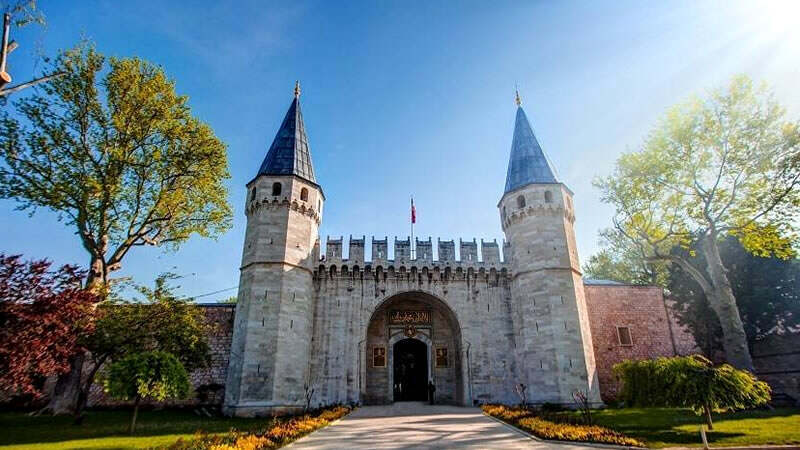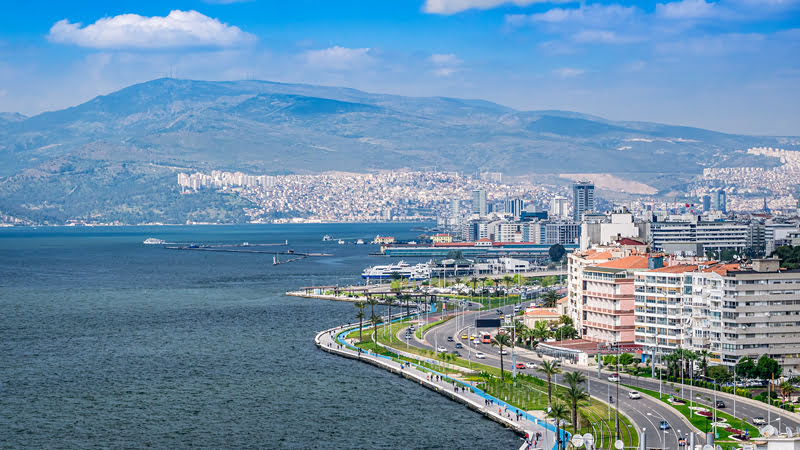Basilica Cistern - Istanbul's Underground Treasure

Istanbul, a global capital that has witnessed significant events throughout history, has served as a crossroads of civilizations. The city's numerous historical landmarks showcase its rich heritage. Among these, the Basilica Cistern stands out as one of the most captivating and fascinating structures. Located beneath Sultanahmet and known as the underground treasure of the city, this cistern was built during the Byzantine Empire and holds great architectural and cultural significance.
Hidden beneath Sultanahmet Square in the heart of Istanbul, the Basilica Cistern is a masterpiece of historical and architectural brilliance. Constructed in 532 AD by Byzantine Emperor Justinian I, the cistern was a vital structure designed to meet the city’s water needs. It served its purpose from the Byzantine era through the Ottoman period. The engineering prowess of the Byzantines is evident in the architectural details of the cistern. Built to ensure an uninterrupted water supply during sieges, the cistern played a crucial role in Istanbul’s defense.
Spanning an impressive 9,800 square meters, the cistern is considered one of the engineering marvels of its time. Its immense size is supported by 336 columns, each approximately 9 meters tall, sourced from various ancient Roman and Byzantine structures. These columns, adorned with unique historical details, contribute to the architectural uniqueness of the cistern. Visitors stepping into the cistern can marvel at the craftsmanship and intricate designs on each column, feeling as though they have embarked on a historical journey. These columns transform the cistern from a functional structure into an artistic and cultural space.
One of the most intriguing elements of the Basilica Cistern is the mysterious Medusa heads. These two heads, steeped in Greek mythology, are placed in unusual positions: one is tilted sideways, and the other is completely inverted. Their placement has inspired various theories, with some suggesting it was done to nullify their mythical powers.
The Medusa heads, intricately carved and positioned under the columns, add to the cistern’s enigmatic aura. Visitors examining these heads embark on a mystical journey where mythology and history intertwine. These heads are not merely decorative elements; they have become iconic symbols of the cistern's mysterious nature. Illuminated under dim lighting, the Medusa heads open a portal to another world for visitors, offering a unique experience where history and mythology converge.
The Basilica Cistern impresses not only with its architectural beauty but also with its functionality as a water reservoir. With a storage capacity of 80,000 cubic meters, the cistern played a vital role in supplying water to Istanbul. Water was transported from the Belgrade Forest via aqueducts and stored in the cistern, ensuring a steady water supply during Byzantine and Ottoman times.
During the Ottoman era, the cistern underwent several restorations and continued to meet Istanbul’s water needs. However, as new water systems were introduced, its role as a reservoir diminished, and the cistern gained prominence as a historical monument.
In addition to its historical and architectural importance, the Basilica Cistern is also a venue for cultural and artistic events. This unique structure occasionally hosts concerts, exhibitions, and performances. Its natural acoustics and mysterious ambiance make these events unforgettable. Classical music concerts held in the cistern’s enchanting atmosphere provide visitors with a cultural feast immersed in history.
These events demonstrate that the Basilica Cistern is not just a tourist attraction but also a cultural hub that contributes to Istanbul’s vibrant artistic life. Local and international tourists visiting Istanbul have the opportunity to enjoy both history and art within the captivating atmosphere of the cistern.
The Basilica Cistern is located in Sultanahmet Square, one of Istanbul’s most central locations. Its convenient position makes it easily accessible for visitors. Being close to numerous historical and touristic landmarks, it is a must-visit spot for anyone exploring Sultanahmet.
The Sultanahmet tram stop is one of the most popular ways to reach the cistern. The tram line connects many significant points on Istanbul's European side, making it an ideal transportation option. From the tram stop, a short walk will take you to the Basilica Cistern. Additionally, buses and minibusses from Taksim Square also provide access to Sultanahmet.
For those seeking a more flexible travel experience, car rental services in Istanbul offer a convenient way to visit the cistern. While parking in the Sultanahmet area can be limited, walking or using public transport is often the more practical option.
Located in the historic Sultanahmet district, the Basilica Cistern is surrounded by many other historical landmarks. After exploring the cistern, visitors can take a short walk to see Hagia Sophia, Topkapi Palace, and the Blue Mosque. These sites, bearing traces of the Byzantine and Ottoman empires, allow for a deeper exploration of Istanbul’s history.
Walking through Istanbul’s historic peninsula reveals the city's rich historical fabric at every turn. Sultanahmet is ideal for exploring on foot, blending the city's historical and modern elements to create a unique experience.
While public transportation in Istanbul is convenient, car rental services provide a flexible option for those who prefer a more personalized travel experience. Renting a car allows visitors to explore Istanbul’s various regions at their own pace. Reliable companies like iZMiRCAR Car Rental offer vehicles that suit diverse needs, making it easier to visit historical and touristic sites comfortably.
With its historical and mystical ambiance, the Basilica Cistern invites every visitor to delve into the depths of history. Its Byzantine architecture and cultural and artistic elements offer an unforgettable experience for anyone visiting the city. This vast underground structure in Istanbul is a must-see for those eager to uncover the past.
Located in Sultanahmet Square, the Basilica Cistern stands alongside other historic landmarks, showcasing Istanbul’s rich cultural heritage. Visiting this treasure offers an unparalleled opportunity to witness the city's history and feel its captivating atmosphere.
History and Construction of the Basilica Cistern
Hidden beneath Sultanahmet Square in the heart of Istanbul, the Basilica Cistern is a masterpiece of historical and architectural brilliance. Constructed in 532 AD by Byzantine Emperor Justinian I, the cistern was a vital structure designed to meet the city’s water needs. It served its purpose from the Byzantine era through the Ottoman period. The engineering prowess of the Byzantines is evident in the architectural details of the cistern. Built to ensure an uninterrupted water supply during sieges, the cistern played a crucial role in Istanbul’s defense.
Spanning an impressive 9,800 square meters, the cistern is considered one of the engineering marvels of its time. Its immense size is supported by 336 columns, each approximately 9 meters tall, sourced from various ancient Roman and Byzantine structures. These columns, adorned with unique historical details, contribute to the architectural uniqueness of the cistern. Visitors stepping into the cistern can marvel at the craftsmanship and intricate designs on each column, feeling as though they have embarked on a historical journey. These columns transform the cistern from a functional structure into an artistic and cultural space.
The Mysterious Detail of the Medusa Heads
One of the most intriguing elements of the Basilica Cistern is the mysterious Medusa heads. These two heads, steeped in Greek mythology, are placed in unusual positions: one is tilted sideways, and the other is completely inverted. Their placement has inspired various theories, with some suggesting it was done to nullify their mythical powers.
The Medusa heads, intricately carved and positioned under the columns, add to the cistern’s enigmatic aura. Visitors examining these heads embark on a mystical journey where mythology and history intertwine. These heads are not merely decorative elements; they have become iconic symbols of the cistern's mysterious nature. Illuminated under dim lighting, the Medusa heads open a portal to another world for visitors, offering a unique experience where history and mythology converge.
Architectural Features and Significance as a Water Reservoir
The Basilica Cistern impresses not only with its architectural beauty but also with its functionality as a water reservoir. With a storage capacity of 80,000 cubic meters, the cistern played a vital role in supplying water to Istanbul. Water was transported from the Belgrade Forest via aqueducts and stored in the cistern, ensuring a steady water supply during Byzantine and Ottoman times.
During the Ottoman era, the cistern underwent several restorations and continued to meet Istanbul’s water needs. However, as new water systems were introduced, its role as a reservoir diminished, and the cistern gained prominence as a historical monument.
Cultural and Artistic Events at the Cistern
In addition to its historical and architectural importance, the Basilica Cistern is also a venue for cultural and artistic events. This unique structure occasionally hosts concerts, exhibitions, and performances. Its natural acoustics and mysterious ambiance make these events unforgettable. Classical music concerts held in the cistern’s enchanting atmosphere provide visitors with a cultural feast immersed in history.
These events demonstrate that the Basilica Cistern is not just a tourist attraction but also a cultural hub that contributes to Istanbul’s vibrant artistic life. Local and international tourists visiting Istanbul have the opportunity to enjoy both history and art within the captivating atmosphere of the cistern.
Visiting the Basilica Cistern: Access and Information
The Basilica Cistern is located in Sultanahmet Square, one of Istanbul’s most central locations. Its convenient position makes it easily accessible for visitors. Being close to numerous historical and touristic landmarks, it is a must-visit spot for anyone exploring Sultanahmet.
The Sultanahmet tram stop is one of the most popular ways to reach the cistern. The tram line connects many significant points on Istanbul's European side, making it an ideal transportation option. From the tram stop, a short walk will take you to the Basilica Cistern. Additionally, buses and minibusses from Taksim Square also provide access to Sultanahmet.
For those seeking a more flexible travel experience, car rental services in Istanbul offer a convenient way to visit the cistern. While parking in the Sultanahmet area can be limited, walking or using public transport is often the more practical option.
Places to Visit Around Basilica Cistern
Located in the historic Sultanahmet district, the Basilica Cistern is surrounded by many other historical landmarks. After exploring the cistern, visitors can take a short walk to see Hagia Sophia, Topkapi Palace, and the Blue Mosque. These sites, bearing traces of the Byzantine and Ottoman empires, allow for a deeper exploration of Istanbul’s history.
Walking through Istanbul’s historic peninsula reveals the city's rich historical fabric at every turn. Sultanahmet is ideal for exploring on foot, blending the city's historical and modern elements to create a unique experience.
Car Rental Options in Istanbul for a Comfortable Journey
While public transportation in Istanbul is convenient, car rental services provide a flexible option for those who prefer a more personalized travel experience. Renting a car allows visitors to explore Istanbul’s various regions at their own pace. Reliable companies like iZMiRCAR Car Rental offer vehicles that suit diverse needs, making it easier to visit historical and touristic sites comfortably.
A Timeless Underground Treasure
With its historical and mystical ambiance, the Basilica Cistern invites every visitor to delve into the depths of history. Its Byzantine architecture and cultural and artistic elements offer an unforgettable experience for anyone visiting the city. This vast underground structure in Istanbul is a must-see for those eager to uncover the past.
Located in Sultanahmet Square, the Basilica Cistern stands alongside other historic landmarks, showcasing Istanbul’s rich cultural heritage. Visiting this treasure offers an unparalleled opportunity to witness the city's history and feel its captivating atmosphere.


















































